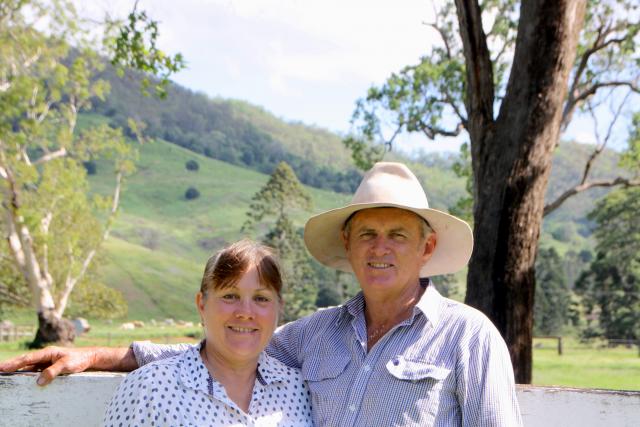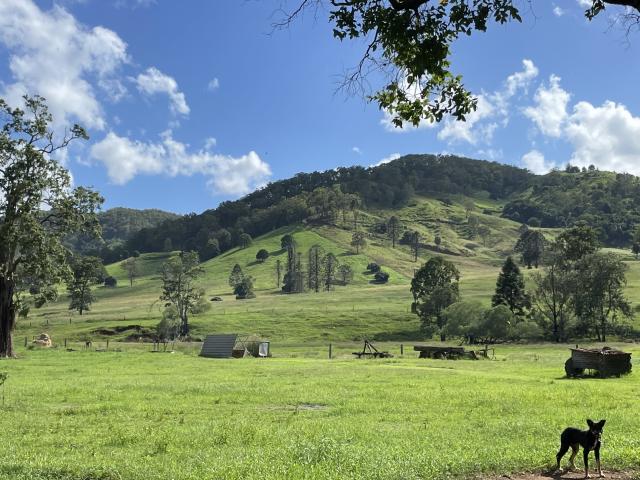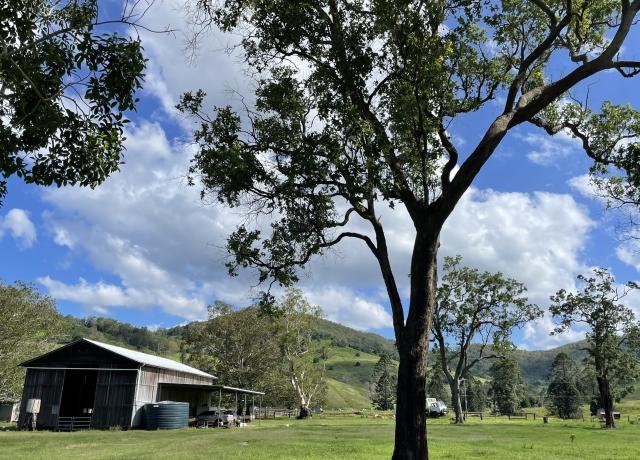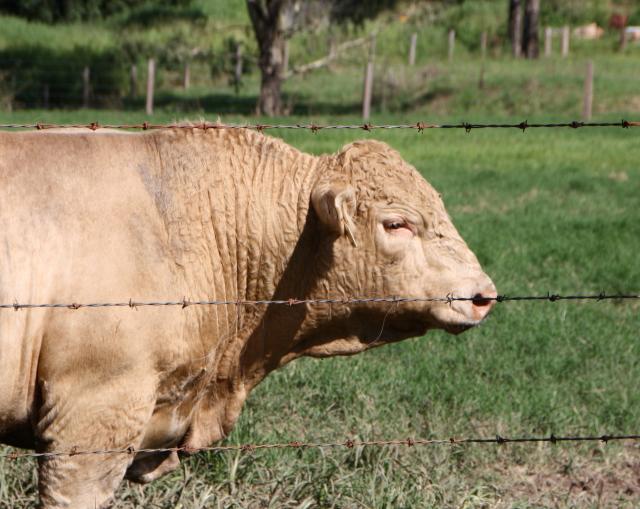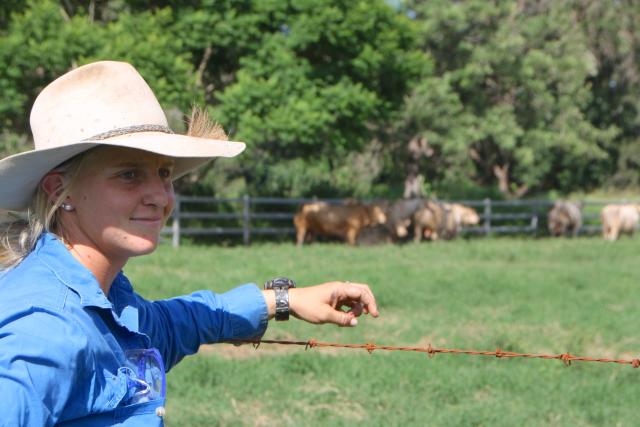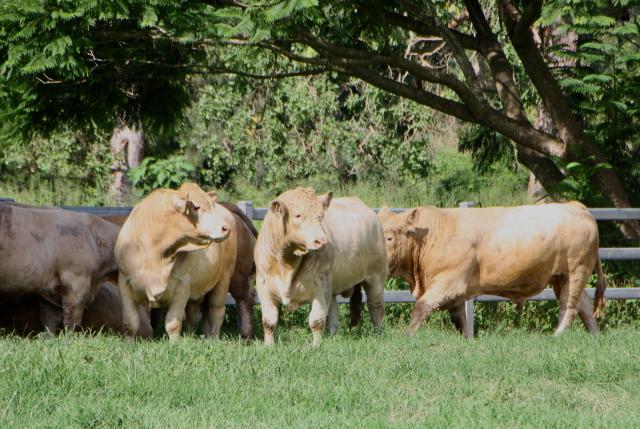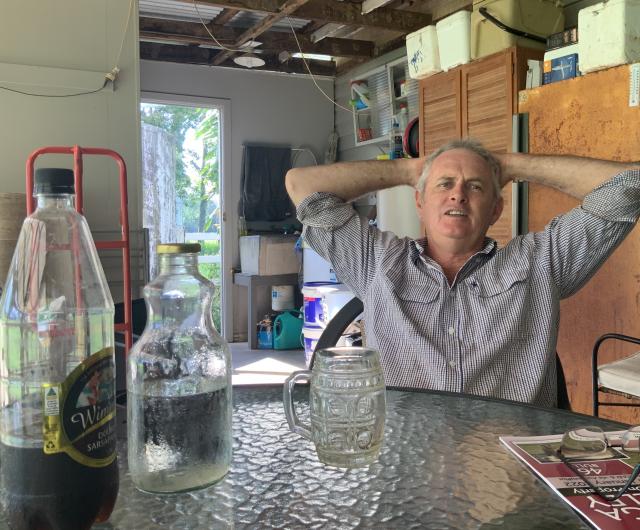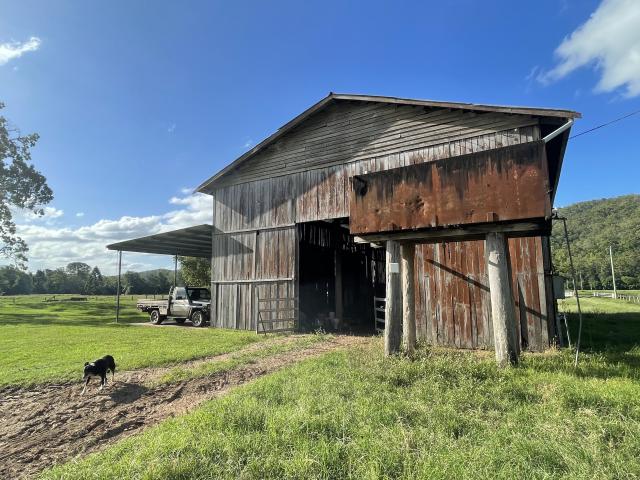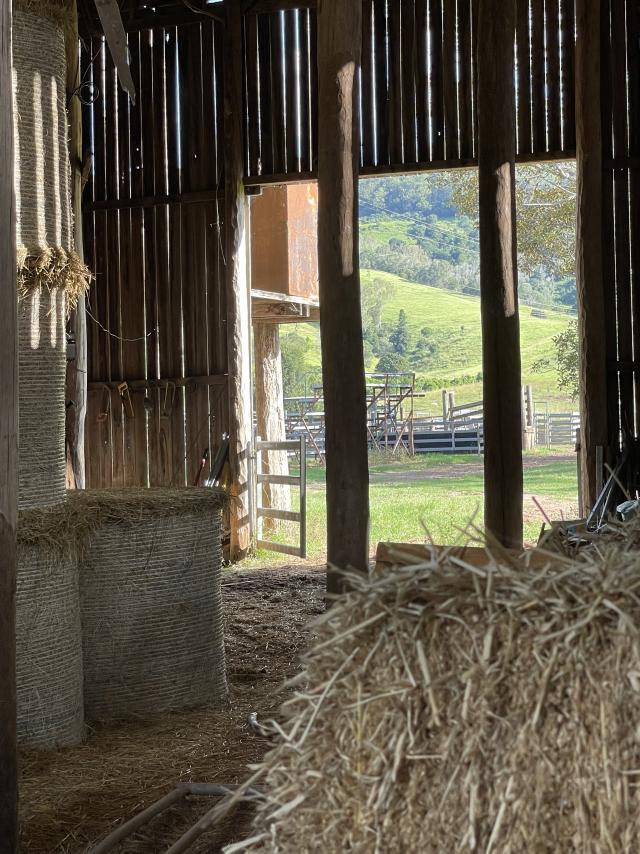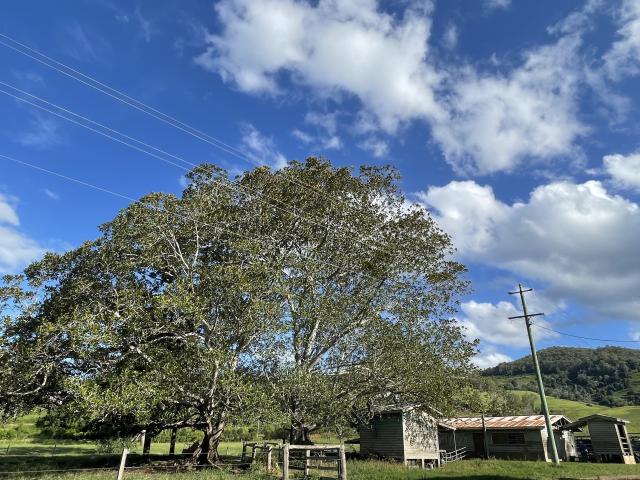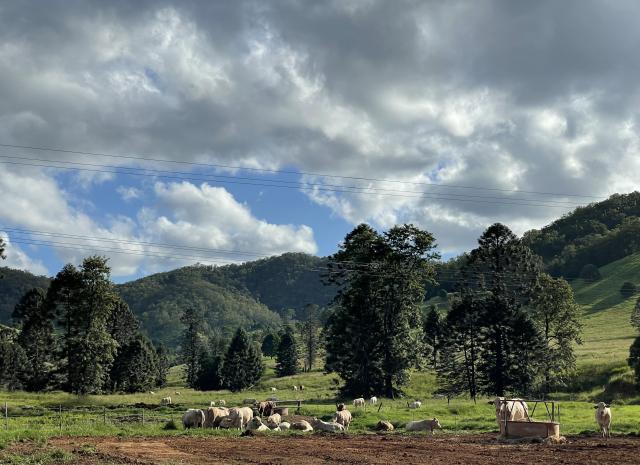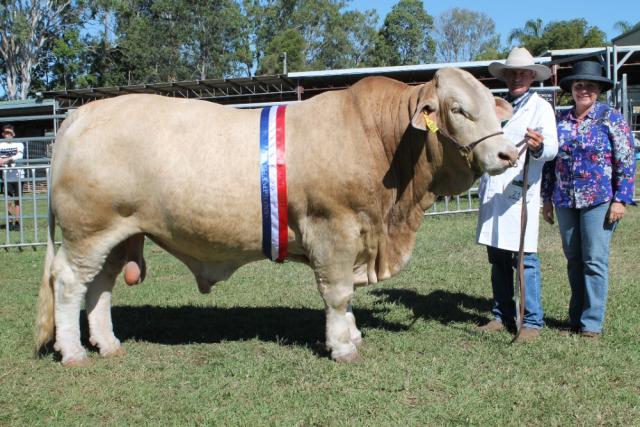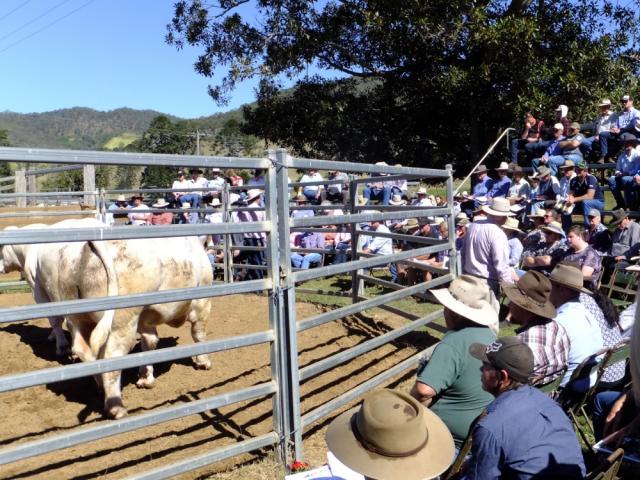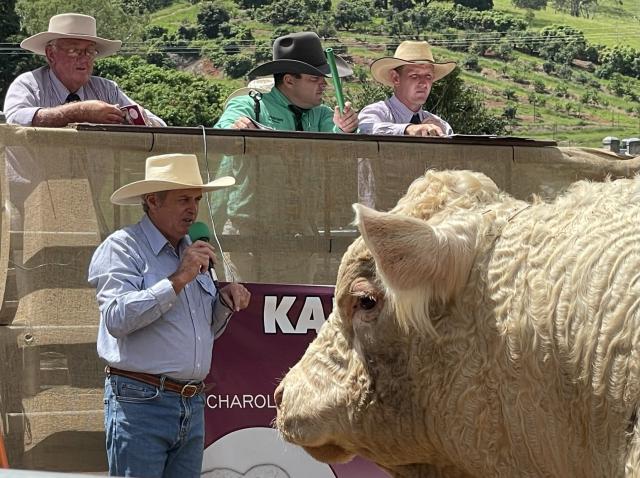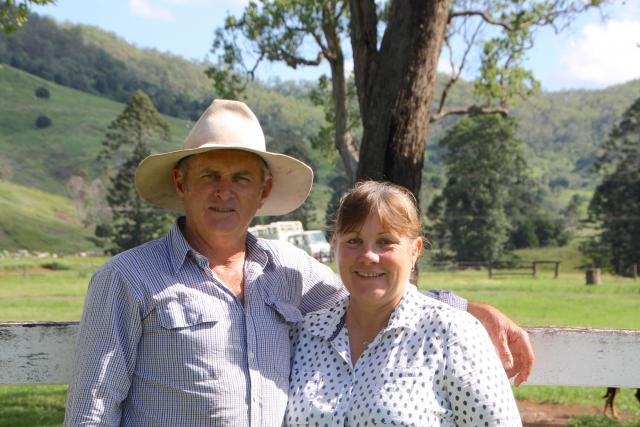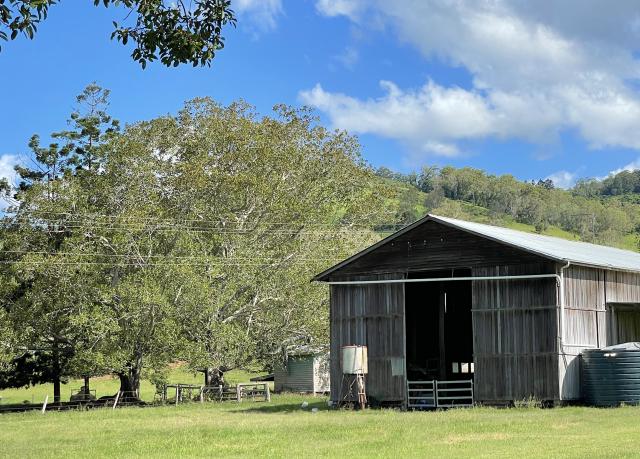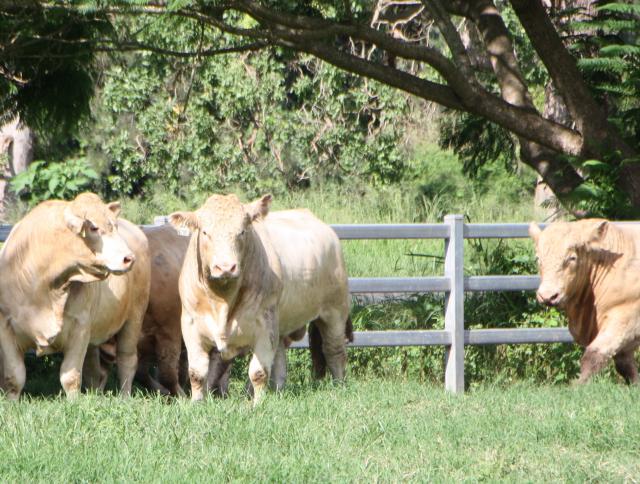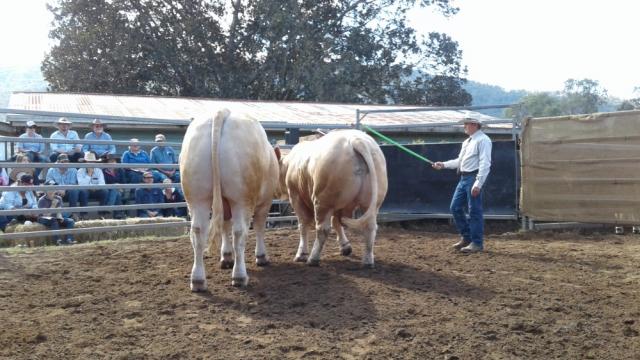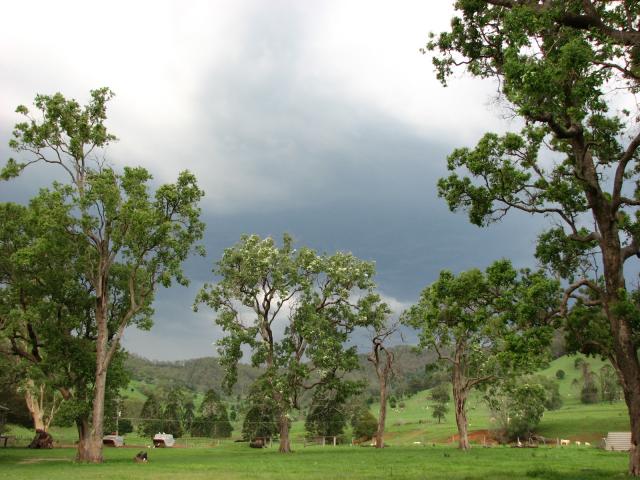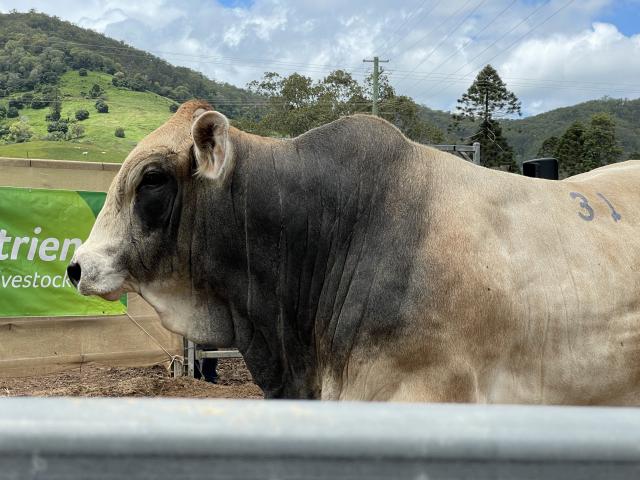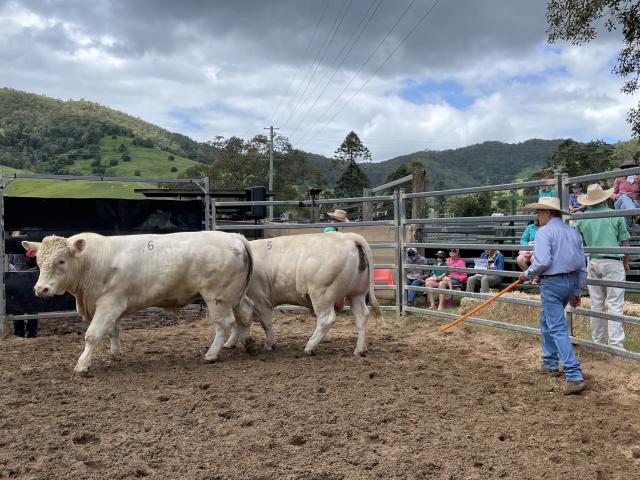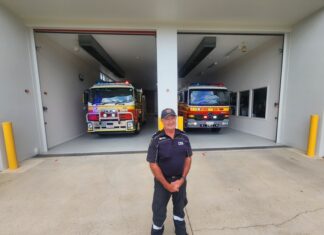PRECEDE
Breeding bulls is the business of John and Roz Mercer at their Kandanga Valley Charolais and Charbray Stud, as ERLE LEVEY reports.
BREAKOUT QUOTE
“They are great cattle in any country but we found they were so successful here.’’
“You’d be lucky to find a straight post in there … it’s the bull paddock“
John and Roz Mercer’s property was spared by the recent storms that swept through the Wide Bay and Burnett recently but the fence on the bull paddock at their Kandanga Valley Stud has taken a buffeting over the years.
The paddock is at the heart of their Charolais and Charbray stud and the bulls have tested the posts out each season.
While John and Roz only saw water rise over some of the creek flats that are part of the 750-acre Upper Kandanga property, their thoughts went out to those in the Kilkivan, Goomeri and Tansey areas where so much damage was inflicted in the major rain event earlier this month.
It’s at the end of the day and I’m sitting with John and Roz on the back verandah of their home.
Over an ice-cold double sarsaparilla, they tell me a bit of history of Warravale.
The property has a couple of kilometres frontage to Kandanga Creek and has a backdrop of bushland ranges.
The hay barn that dominates the skyline was built from locally milled timber in 1962 and fits 10,000 square bales. It’s an impressive structure and one can only imagine the stories it could tell.
Both the Kandanga Valley Charolais and Charbray studs were established in 1988.
The first Charolais cattle at Kandanga were purchased by John’s parents, Kev and Joan.
That was in 1973 and there has been a Charolais infusion in the Kandanga Valley herd since those early days.
John and Roz purchased Warravale from his parents in 1986 and have since owned properties in Central Queensland as well as at Tansey and the Gympie district. They also agist cattle on properties west of Gympie.
“Now, having sold all of our Tansey grazing country, we have secured a very nice property, Durilgai, at Moonie on the Western Downs,’’ John said.
“That’s where most of our Charolais females run.
“Dad bought some cattle at the first Charolais sale in Queensland. That was in Dalby, and started the stud.
“Then he bought some registered Charbray in Gympie in 1979.
“Bill Bishop had the first Charbray dispersal sale at the Nahrunda Stud. They were making a name.
“They are great cattle in any country but we found they were so successful here.’’
Charbray have great saleability and the Mercers put heavy emphasis on purebreds for a much better consistency of progeny to be delivered.
John’s parents were originally from Bundaberg and had four years at Eumundi before buying Warravale.
At the age of 18 John attended Burdekin Agricultural College while Roz was from the dairy-farming Franz family at Amamoor.
Sitting here at Warravale, chatting, it was like an autumn day. No sign of the heavy rainfall the week before except at the creek crossings along the road.
“The water came up in a few places but not much damage,’’ John said. “There are a few fences to fix.’’
There’s certainly been a few ups and downs in the 50 years John has been in the industry.
Right now, commercial cattle prices are as good as any he’s seen.
“We are riding a wave at the moment.
“It’s been pretty good across the board.
“We are now running in excess of 1200 registered stud cattle, down from a peak of around 1700.
“We have put a big emphasis on fertility and productivity over the last few years as we have wound our herd back to a more manageable level.’’
Kandanga Valley is 750 acres of creek flats to scrub hills, all with improved pastures.
Then there is another 750 acres at Rocks Rd, Gympie – beautiful undulating hills – and a leased block at Glastonbury.
At Moonie, they run 300 Charolais and Charbray breeders plus 100 heifers.
“It’s clean country and there are no ticks, so we run the Charolais breeders out there and bring the young bulls back to acclimatise.’’
The stud has been going long enough now for Warravale to rely on their own bloodlines for breeding.
John selects bulls that are from good cows.
“We keep a good bull and use him, then you will find some of the best bulls come out of the cow.
“That leads to good consistency in quality bulls.
“Lots of muscling, constitution and ability to put on fat.’’
Since 1979 they have used registered Charolais, Charbray or Brahman bulls over registered females of the same breeds as part of the selection process.
Early on, Charolais breeders were purchased from numerous high-profile studs plus smaller herd dispersals back in the ’80s. This practice has led to a versatile breed that is more suited to the local environment.
“Since then we have bred heavy-muscled, soft-fleshed French type cattle with an eye on all the traits required to perform in Queensland conditions.
“Traits like fertility, milk, growth and muscling rank very highly in our selection criteria.
“With commercial cattle you are looking for a high meat yield, plenty of bone and structure.
“The tremendous growth of those first Charbrays, with the added benefit of tick resistance, convinced us that Charbray cattle were the most profitable in our environment and probably most other environments as well.’’
Pride of the herd is Kandanga Valley Jesuit, the Mercer’s 2016 EKKA Grand Champion Charbray bull that is having a major influence in the herd with 211 progeny recorded.
An outstanding on-property sale last July has rolled on to a highly-successful summer bull sale last Saturday.
At that sale 43 young bulls were offered, with 100 percent sold at auction for an average of $10,580.
Charolais bulls sold to a top of $25,000 while the highest price Charbray bull was $20,000.
The young bulls offered last Saturday had a tough start to life at Moonie, as they were born at the height of drought, but since then they have taken off beautifully.
Being prepared on coastal pastures means they can adapt to most environments.
The two years of drought in 2018-19 was a shocker.
“We bought as many cattle home as we could but then ran into drought here, and a bushfire in 2019 didn’t help us.’’
The prices now help compensate for the battles over the years.
The drought meant it was expensive, as the Mercers were bringing hay from Victoria and lick from Sarina.
Now, the hay shed at Moonie has blown down in the recent storms – a 30m shed totally demolished.
“There’s always something,’’ John said.
So what drives you?
“Seeing the results of hard work.
“The on-property sales mean we can present the bulls in peak condition. We can have them looking their best all the time.
“Every animal I look at I’m judging them. I’m assessing them.
“It’s lovely if you’ve got 1300-1400 head to call your own.
“You’re your own boss.
“Last year’s July sale saw 40 years of hard work come to fruition.
“Now we have to spend it on catch-up to repair things … if we can find someone to help do it.’’
John and Roz have raised four great children – Wade, Kate, Nick and Brooke – and are now proud grandparents to an ever increasing family of enthusiastic, passionate offspring.
The kids come to the sales to help out when they can.
At the same time John has used his knowledge and experience in the industry to give back by judging.
He judged four breeds at Beef Week in Rockhampton … Blonde d’Aquitaine, Wagyu, Boran and Piedmontese.
He was also fortunate enough to be asked to judge an international Charolais/Charbray show.
The judging took place over the internet through other parts of the world where the Charolais and Charbray run co-jointly. Yet in Australia they are separate breed societies.
The cattle were videoed as they were led and presented – as if being presented at a live show.
It gave John an insight into other cattle and the types of country they were in, such as Brazil and Mexico.
That reinforced his opinion that Charbray perform anywhere.
They were in pretty good order despite being in harsh country.
The Mercers have also been on three world congress tours for Charolais and Charbray cattle.
Every country has Charolais, but different types.
The first tour was to the UK and Northern Ireland, then France … home of Charolais.
Then to Sweden and Norway.
This year at Kandanga the rainfall has been good right through, John said – no records but a good average year.
“That has allowed us to expand and make it a very productive piece of country.
“If you don’t keep going ahead, you’re going backwards.
“Looking ahead, we would still like to be in the game for a while. Try and reinvent ourselves.
“Things are good at the moment so we’ll keep going as we are.’’
The on-property bull auctions are exciting for John to see them in the sales ring.
It’s also stressful, as so much is relying on one day.
“You can have weather, but it’s also a matter of whether buyers turn up or not.’’
So, what is it about cattle breeding that makes it so attractive to you?
“Forty years of battling and scraping … it’s not for everybody.
“It’s so picturesque here though. You can go from one door to another … two or three times before breakfast … and just look out.
“In the late afternoon, you can sit out the back – like this – and look up the valley.
“It’s pretty hard to find another valley that looks like this.
“The bunya trees … the stately gums.
“The old dairy and the barn were built about the same time as I was born.
“The barn – you don’t see many like that.
“It would be one of the first herringbone dairies in Queensland. Maybe the first.
“There was an electric gate to herd the cows in, and it even had a feed-lot when we bought it. There wouldn’t have been too many of them then.
“It was a showpiece property.’’
And judging by the numbers at their recent auctions, it still is.
John and Roz’s respect for their property and passion for their stock is resulting in some pretty special outcomes.

